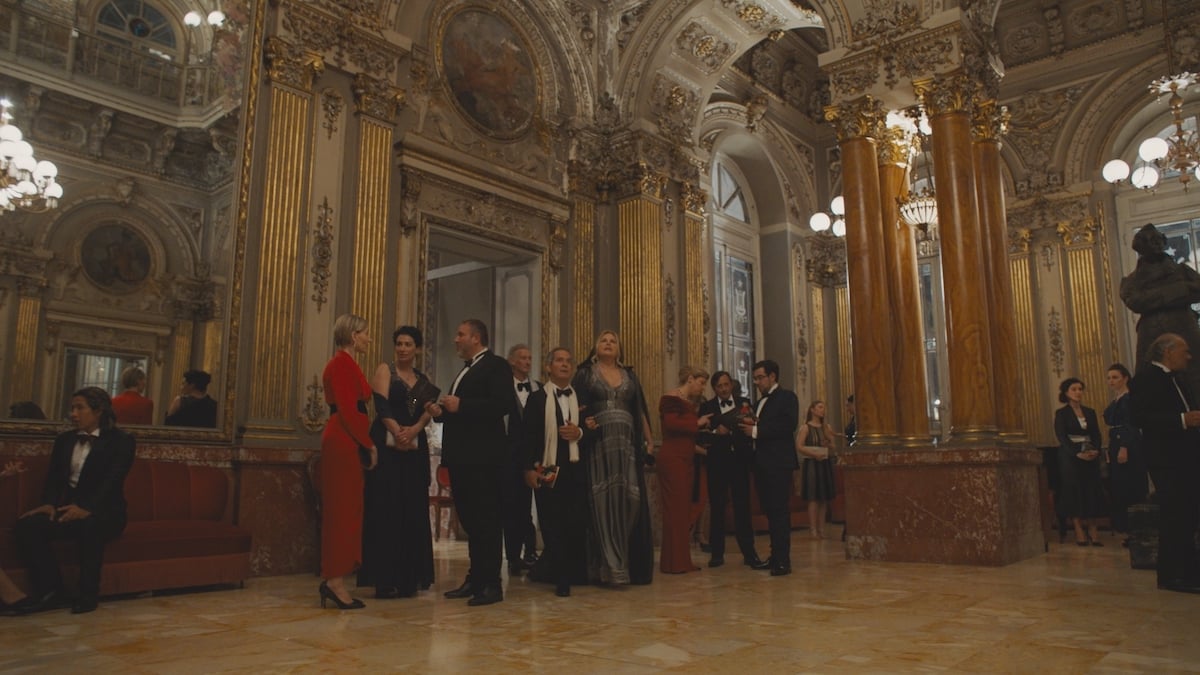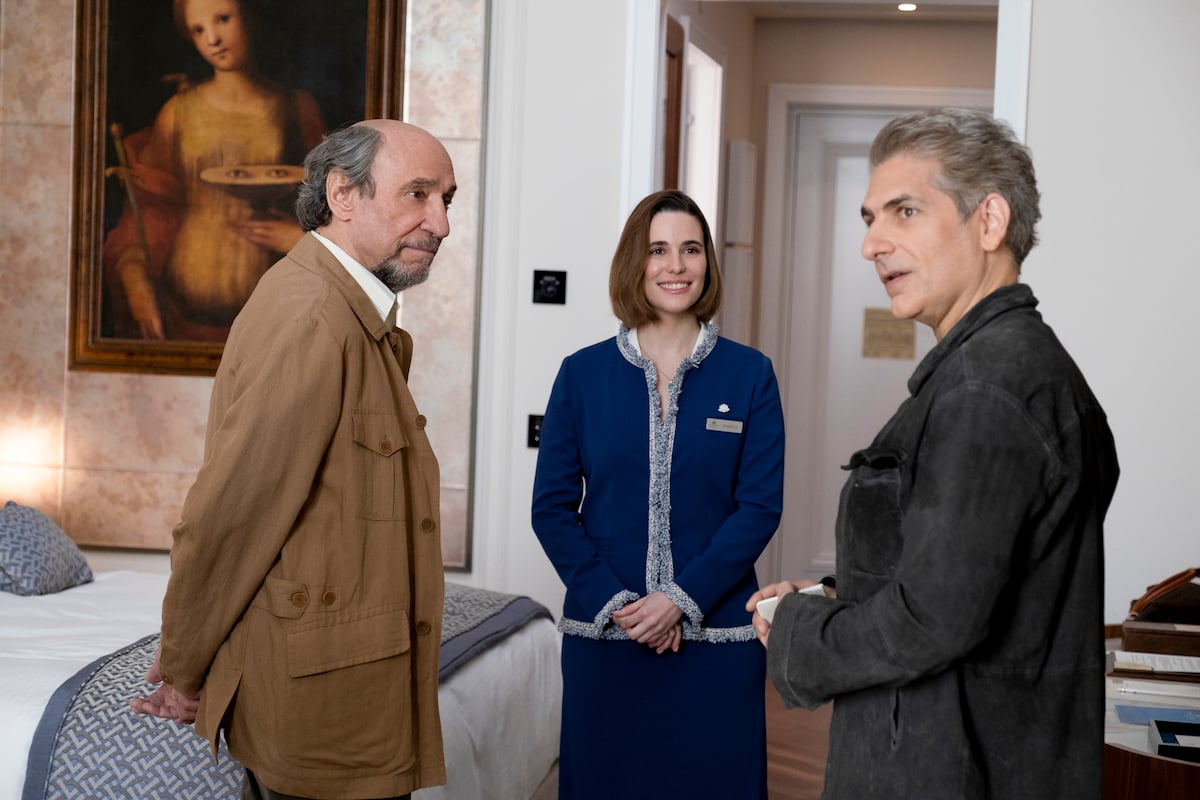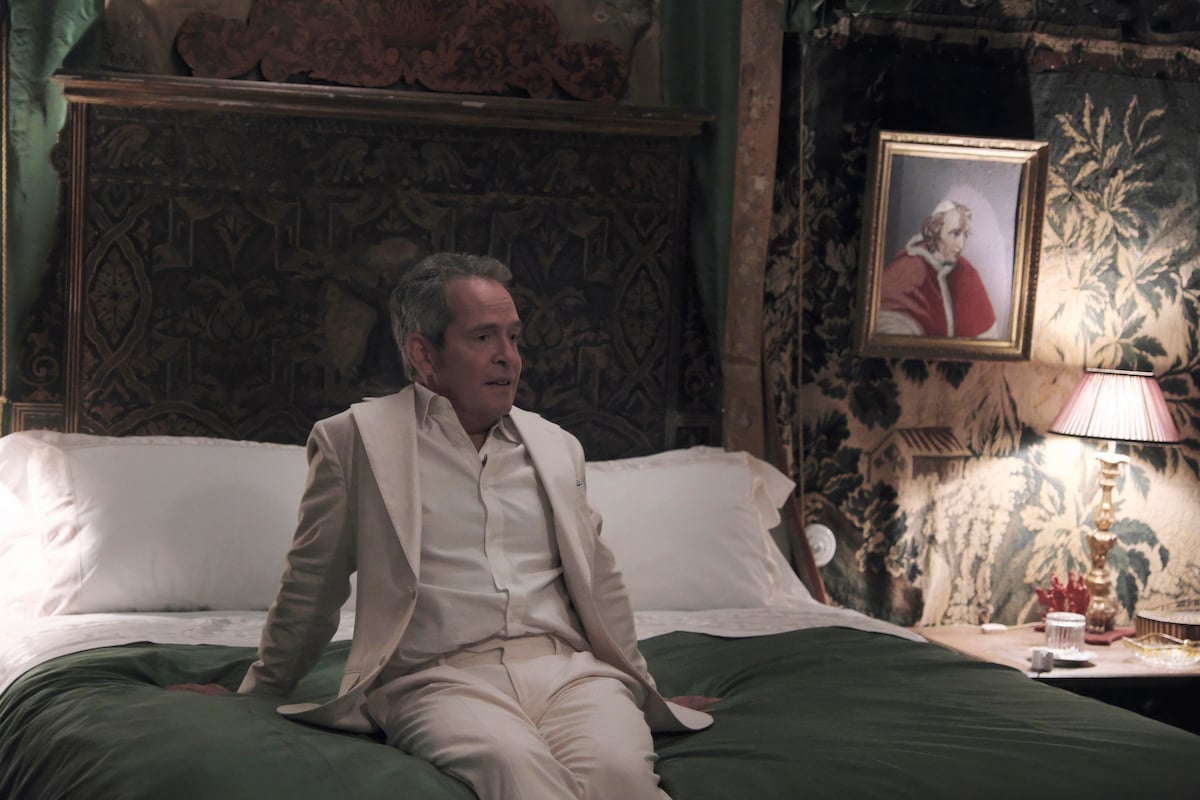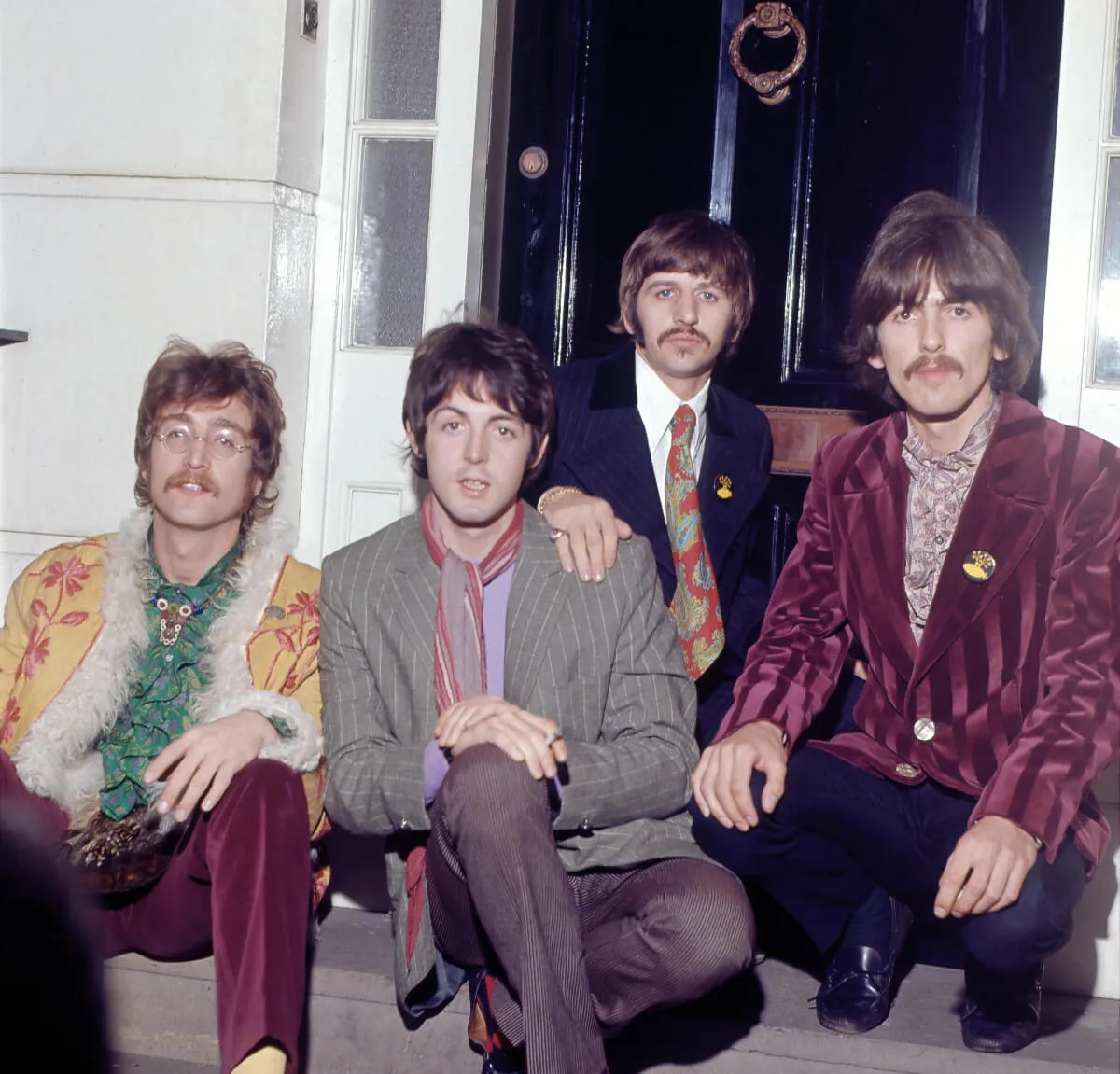
‘The White Lotus’ Hotel’s Many Paintings Hint at Danger and Sexual Struggles Throughout Season 2
Season 2 of HBO’s The White Lotus abounds with suspense, sexual tension, and not-so-subtly placed replicas of famous artworks. Filmed at the San Domenico Palace in Taormina, Italy, the season follows a handful of guests staying at the hotel. While the first season used books to give fans a deeper insight into the characters, season 2 used art.
However, most viewers couldn’t interpret the art’s meaning. Still, showrunners made it clear the paintings were relevant to the story. So let’s turn to art enthusiasts to see how they interpreted the more significant pieces in The White Lotus.
‘Saint Lucy’ by Domenico Beccafumi

Upon arrival in Italy, timid hotel attendant Isabella (played by Eleonora Romandini) shows Bert (F. Murray Abraham) and the rest of the Di Grasso men to their rooms. Throughout The White Lotus Season 2, Bert proves how out of touch with the times he is, as he constantly harasses any woman who speaks in his vicinity. While Isabella shows Bert his room, he compliments her eyes before loudly passing gas in a cringe-worthy scene.
In an article for Vanity Fair, Italian-born Stanford University art history professor Emanuele Lugli points out how the camera pans out during this scene to reveal the painting Saint Lucy by Domenico Beccafumi. In this work, the saint’s gouged-out eyes rest on a plate she holds in her left hand, level with Isabella’s eyes in the shot.
As the patron saint of the blind, Saint Lucy is usually depicted without eyes, but there are conflicting reports about how she lost them. One legend claims Saint Lucy tore out her eyes and gave them to a suitor she rejected after she became irritated by his unwanted persistence. Apparently, the suitor really liked her eyes.
‘Saint Sebastian’ by Pietro Perugino
In The White Lotus Season 2, Bert traveled to Italy with his son Dominic (Michael Imperioli) and grandson Albie (Adam DiMarco). Viewers first see Saint Sebastian by Pietro Perugino in Albie’s room above his bed after he hooks up with Lucia (Simona Tabasco) for the first time. The painting depicts the martyr tied to a pole, struck with an arrow in his chest and arm. It’s believed Saint Sebastian was sentenced to death by arrows after the Romans discovered he was Christian. However, he miraculously survived and was healed by Saint Irene.
TikToker and art enthusiast @meeeeelzonwheeeelz brought attention to the painting in this scene, comparing Albie to the martyr. She points out that people viewed Saint Sebastian as a protector during the plague and that he might be protecting others from a more modern epidemic: toxic masculinity.
While the TikToker suggests Lucia is Albie’s Irene, the sex worker’s actions are closer to the Roman’s. She takes advantage of Albie’s naiveté, manipulating him into handing over his father’s money before she disappears. But instead of becoming angry and bitter, Albie remains innocent.
‘Tarquin et Lucrèce’ by Titian

Harper (Aubrey Plaza) and her husband Ethan (Will Sharpe) are also guests at the hotel in The White Lotus Season 2. They’re traveling with Ethan’s frenemy — former college roommate Cameron (Theo James) — and his wife Daphne (Meghann Fahy.) The same TikToker analyzed a scene in episode 3 where Harper is lying in bed wearing yellow satin pajamas while attempting to seduce her husband.
Behind her on the wall is a replica of Titian’s painting Tarquin et Lucrèce, which depicts a nude woman lying back on a bed, echoing Harper’s position, while a man threatens her with a knife. This scene is known as “The Rape of Lucretia” and was often portrayed in Renaissance art. Allegedly, Sextus Tarquinius, the youngest son of the last king of Rome, threatened to kill Lucretia if she rejected his advances and raped her. She exposed him almost immediately before tragically dying by suicide. The incident provoked a revolt in Rome, during which the people overthrew the king and established the Roman Republic.
At this point in The White Lotus Season 2, we’ve already witnessed Cameron make inappropriate advances toward Harper. TikToker @meeeeelzonwheeeelz theorized that Cameron would continue pursuing her and possibly assault Harper, leading her to end her own life. However, those who finished the season know that while something eventually happens between Harper and Cameron off-screen, Harper describes it as consensual. However, if she wasn’t suspicious of Ethan cheating on her and interested in revenge, there’s a strong possibility Cameron would have assaulted her. He made it pretty clear he wasn’t taking no for an answer, and as mentioned briefly at the beginning of the season, he was guilty of sexual misconduct in the past.
Unnamed painting of Lucretia’s suicide

In The White Lotus Season 2 Episode 5, Tanya (Jennifer Coolidge) walks in on Jack (Leo Woodall) having sex with his supposed uncle, Quentin (Tom Hollander). As the shock of the scene sets in, the camera pans to a painting of a nude woman partially covered with a blanket and holding a dagger. TikToker @meeeeelzonwheeeelz suggests this painting was created for The White Lotus because there’s no evidence of it existing elsewhere. Her theory is that it’s a painting of Lucretia’s suicide, as the image is similar to others depicting this scene.
“I think this is a rendition of the death of Lucretia, the moment she decides to commit suicide … She’s looking sad. She has a dagger in this version. It looks like she’s about to stab someone else, not herself, making me think that whoever it is, Lucretia fights back. Maybe it’s Tanya ’cause she’s looking right at the painting.”
Although Harper’s story parallels the version of Lucretia who kills herself, this painting seems to foreshadow Tanya’s storyline. The artist depicted Lucretia as unhappy but also determined. She’s holding the dagger in a way that indicates she’s preparing to use it on someone else. Likely, that predicts Tanya’s final act of bravery on Quentin’s boat after she realizes they’re trying to kill her. In the same way that Lucretia grips the dagger in this painting while mulling over her plan of action, Tanya holds a gun before killing most of the people onboard. Even though she fell off the boat and died, she didn’t go down without a fight.


